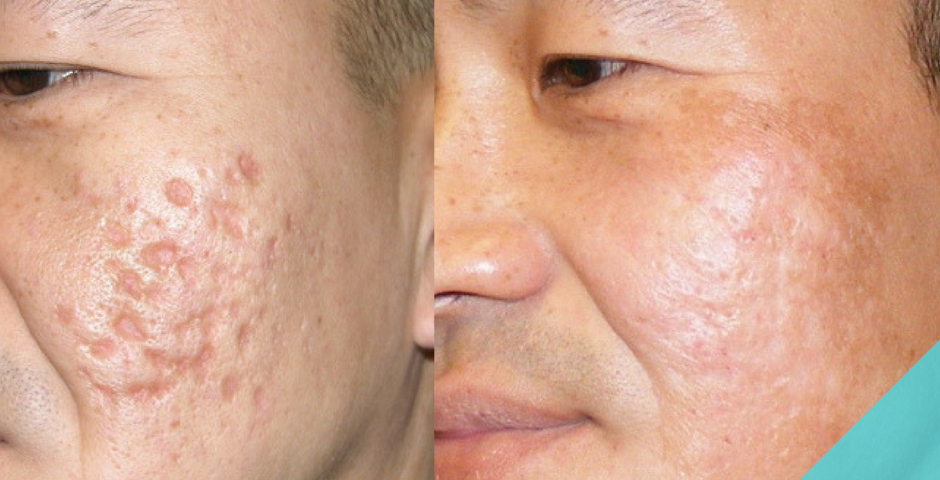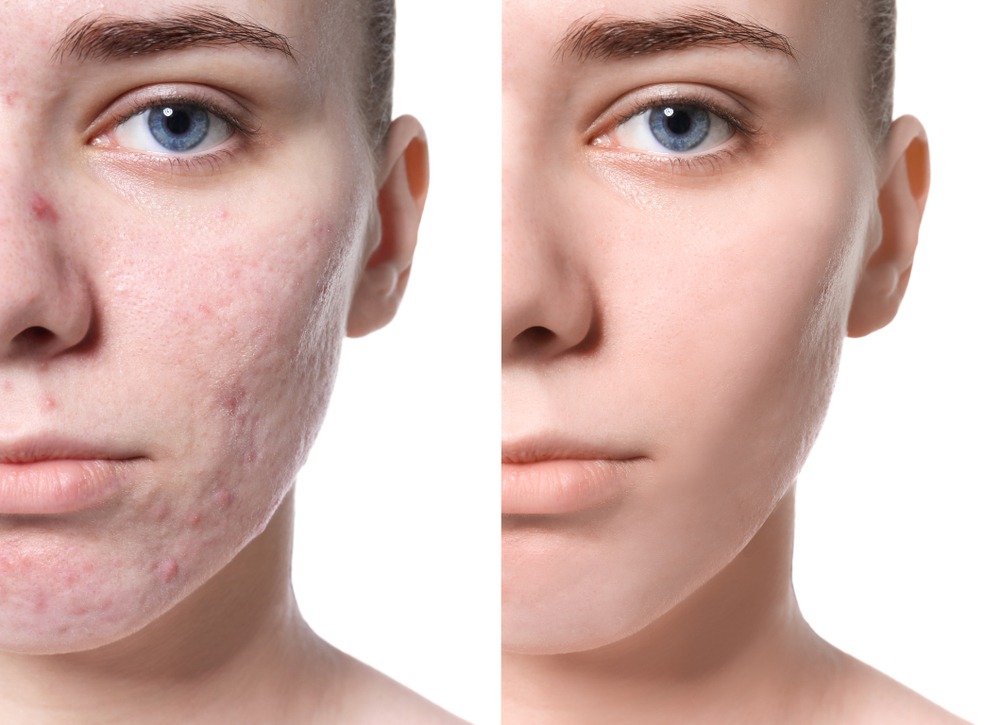Leading Acne Treatment for Sensitive Skin: Gentle Solutions for Clear Skin
Leading Acne Treatment for Sensitive Skin: Gentle Solutions for Clear Skin
Blog Article
Recognizing the Different Skin Conditions and Reliable Treatment Options for Acne Marks
Acne scars stand for a complicated interaction of skin conditions that considerably impact individuals' self-worth and overall skin wellness. As we explore the landscape of acne mark administration, it comes to be obvious that the trip towards clearer skin might entail more than simply topical solutions.
Kinds of Acne Marks

On the other hand, hypertrophic marks arise from an overproduction of collagen throughout the recovery procedure, leading to increased locations on the skin. These scars are often strong and can differ in color, often appearing red or darker than the surrounding skin.
Recognizing these kinds of acne marks is crucial for developing a reliable therapy plan - acne and acne scars treatment. Choices may include chemical peels, laser therapy, microneedling, or dermal fillers, customized to the particular scar kind. An extensive consultation with a skin doctor can help determine the most suitable intervention, thinking about the individual's skin type, scar severity, and total skin health
Root Causes Of Acne Scarring
Marking takes place as an outcome of the body's all-natural healing feedback to inflammation and injury created by acne lesions. When acne types, it causes an inflammatory response, bring about the release of numerous cytokines and development elements that promote healing. However, this process can sometimes result in too much cells development or inadequate fixing, leading to scars.
The key sources of acne scarring include the intensity of the acne itself, period of the sores, and specific skin kinds. Serious inflammatory acne, such as nodules and cysts, is more likely to cause scarring due to deeper cells damage. In addition, improper handling of acne sores, such as pressing or picking, can aggravate tissue injury and swelling, raising the chance of scarring.
Hereditary predisposition likewise plays a significant role; individuals with a family background of scarring go to a higher threat. In addition, skin kind and shade can affect mark development, as darker skin tones may experience post-inflammatory hyperpigmentation, while lighter skin might create atrophic marks.
Inevitably, recognizing these reasons is important in taking care of acne and reducing the capacity for scarring.

Therapy Alternatives for Scarring
Effective therapy options for acne scarring differ depending on the type and seriousness of the scars. Usually classified right into atrophic, hypertrophic, and keloid marks, these problems require customized strategies for optimum outcomes.
For atrophic scars, which are characterized by a loss of cells, therapies such as chemical peels, microdermabrasion, and laser therapy are frequently utilized. These approaches promote skin revival and stimulate collagen production, consequently improving skin texture. Subcision, a minimally invasive treatment, can additionally be reliable by separating coarse bands below the skin.
Keloid and hypertrophic marks can be more testing to deal with. Options consist of corticosteroid shots to reduce swelling and squash the scars. In some cases, my review here cryotherapy or laser therapy may be recommended to minimize their appearance.
Surgical options are readily available for severe scarring, where excision or skin grafting might be necessary. It's crucial for individuals to speak with a dermatologist to assess their specific scar type and discuss one of the most appropriate therapy strategy. Integrating numerous therapies usually produces the finest end results, guaranteeing that each individual's special skin disease is dealt with effectively.
Natural Home Remedy and Natural Solutions
Natural remedies and natural remedy can offer an obtainable method for individuals seeking to boost the look of acne scars (acne scars). Various active ingredients located in the home kitchen have actually demonstrated potential advantages in improving skin texture and advertising healing

Another effective alternative is lemon juice, which acts as an all-natural exfoliant and can lighten hyperpigmentation. Nevertheless, it ought to be used meticulously, as it may create photosensitivity. Oat meal masks are also beneficial; their gentle peeling can aid remove dead skin cells while soothing irritability.
Essential oils, such as tea tree oil and lavender oil, can further support scar recovery due to their antimicrobial residential or commercial properties. It is important to execute a patch test prior to applying any kind of remedy to make sure there are no unfavorable responses. These all-natural solutions can be a complementary method in the trip to lessen acne marks.
Preventing Future Scarring
Embracing a proactive technique to skincare can substantially reduce the threat of creating future acne scars. One of the crucial methods is to take care of acne effectively as it occurs. This includes utilizing non-comedogenic skincare items and medicines suggested by skin doctors that target acne without irritating the skin. Routine cleaning, peeling, and hydration can help maintain skin health and prevent clogged up pores.
Furthermore, preventing the temptation to select or squeeze acne sores is essential, as this can lead to inflammation and subsequent scarring. Rather, people should concentrate on using topical therapies that advertise healing and lower swelling. Components such as salicylic acid, benzoyl peroxide, and retinoids are understood for their efficacy in taking care of acne and decreasing marks.
Sun security is another vital part; direct exposure to UV rays can darken scars and impede healing. As a result, making use of a broad-spectrum page sunscreen daily can alleviate these impacts - acne treatment for sensitive skin.
Lastly, preserving a healthy diet abundant in antioxidants and staying hydrated assistances skin regrowth. By implementing these safety nets, people can substantially lower their risk of future scarring and promote total skin health.
Verdict
To conclude, a detailed understanding of acne scars, encompassing both hypertrophic and atrophic kinds, is important for efficient therapy approaches. Tailored treatments, consisting of specialist treatments and home solutions, can considerably improve skin appearance and texture. Precautionary measures also Home Page play a vital role in lessening future scarring. Examination with a skin doctor remains crucial to design tailored approaches that take into consideration specific skin kinds and scar intensity, eventually enhancing the effectiveness of scar management techniques.
Acne scars stand for an intricate interplay of skin problems that significantly influence individuals' self-esteem and total skin wellness. The 2 primary categories of acne marks are hypertrophic and atrophic marks. These scars are additional classified into 3 subtypes: ice pick marks, which are deep and narrow; boxcar marks, which are wider and have well-defined sides; and rolling scars, which produce a wave-like look due to irregular skin appearance.
A detailed consultation with a skin doctor can help determine the most suitable treatment, taking into account the person's skin kind, mark intensity, and general skin wellness.
Consultation with a dermatologist remains imperative to devise customized methods that take into consideration specific skin kinds and mark extent, eventually boosting the effectiveness of scar management methods.
Report this page